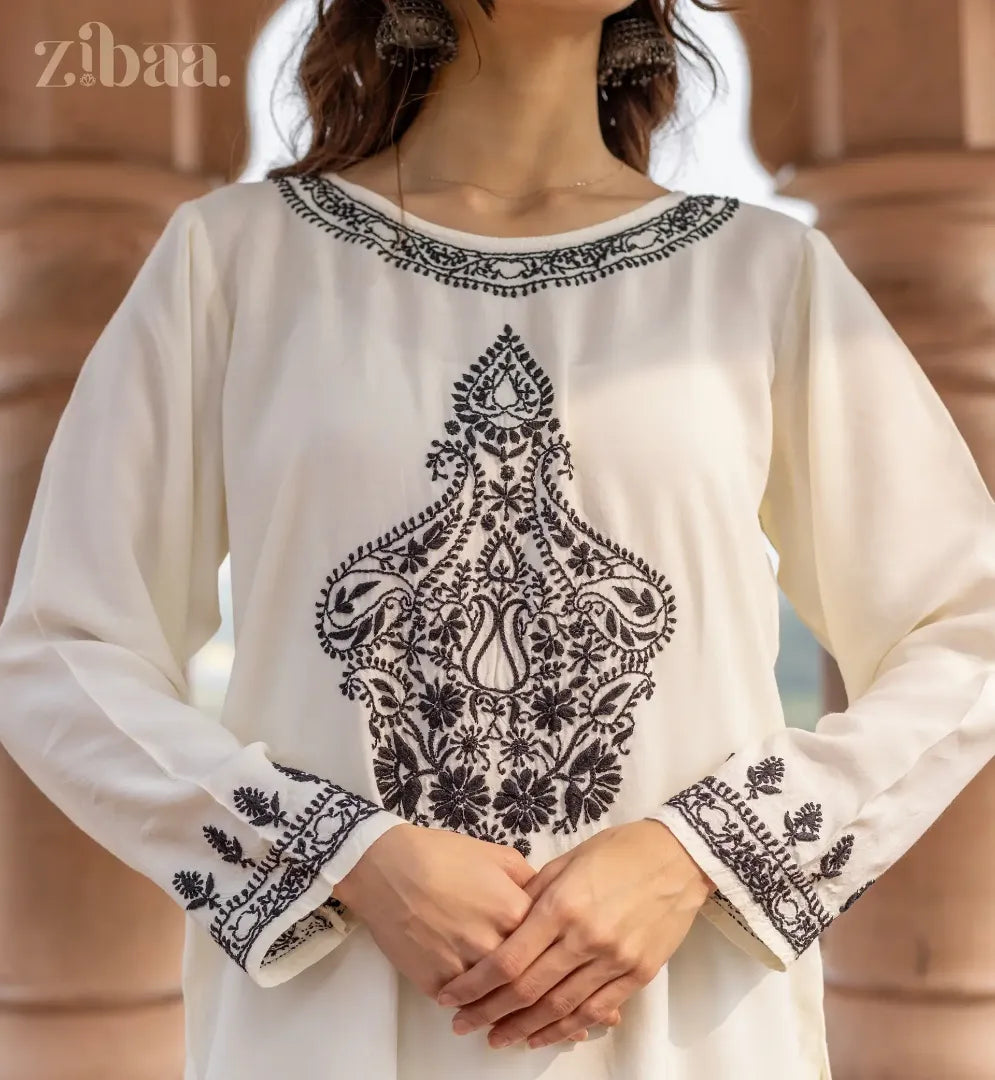Georgette
Filters
Filters
S
M
L
XL
Precision and Detailing
Each Chikankari Kurta at Zibaa is made with utmost precision and detailing. It takes our skilled artisans hours of hard work to make sure each piece of Chikankari kurti, co-ord Set, tunic and top is perfection personified.
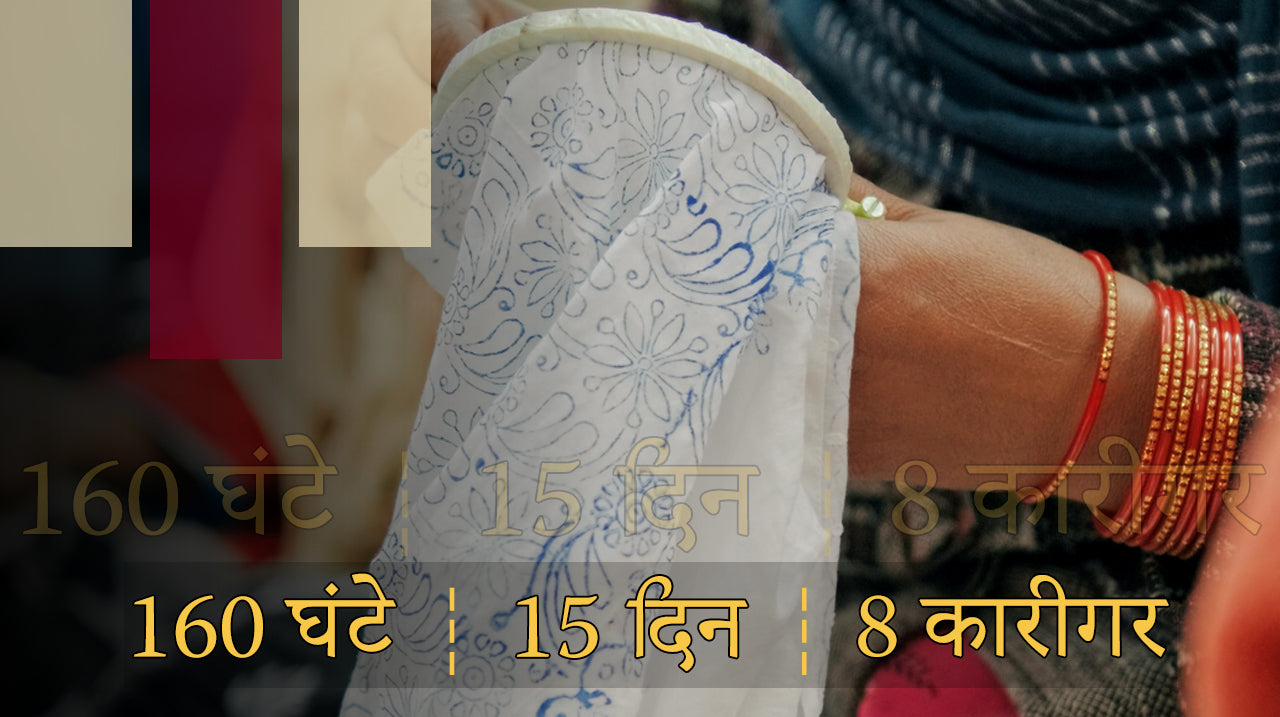
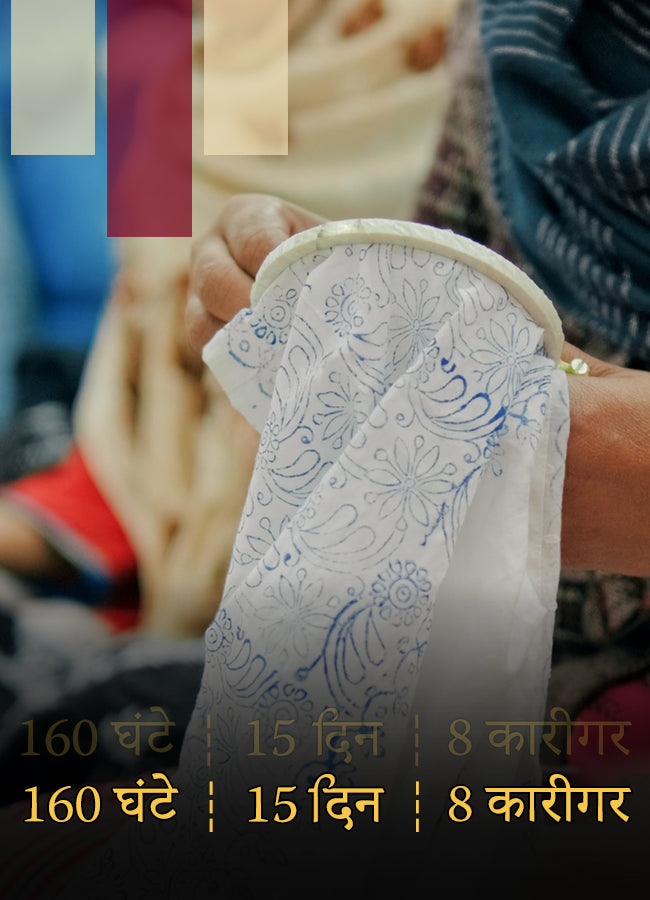

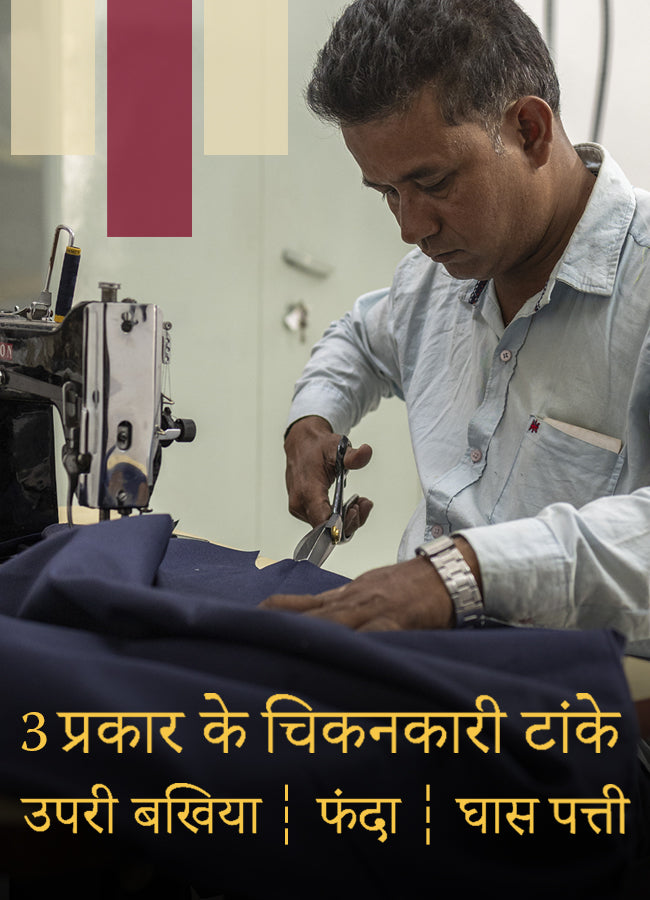
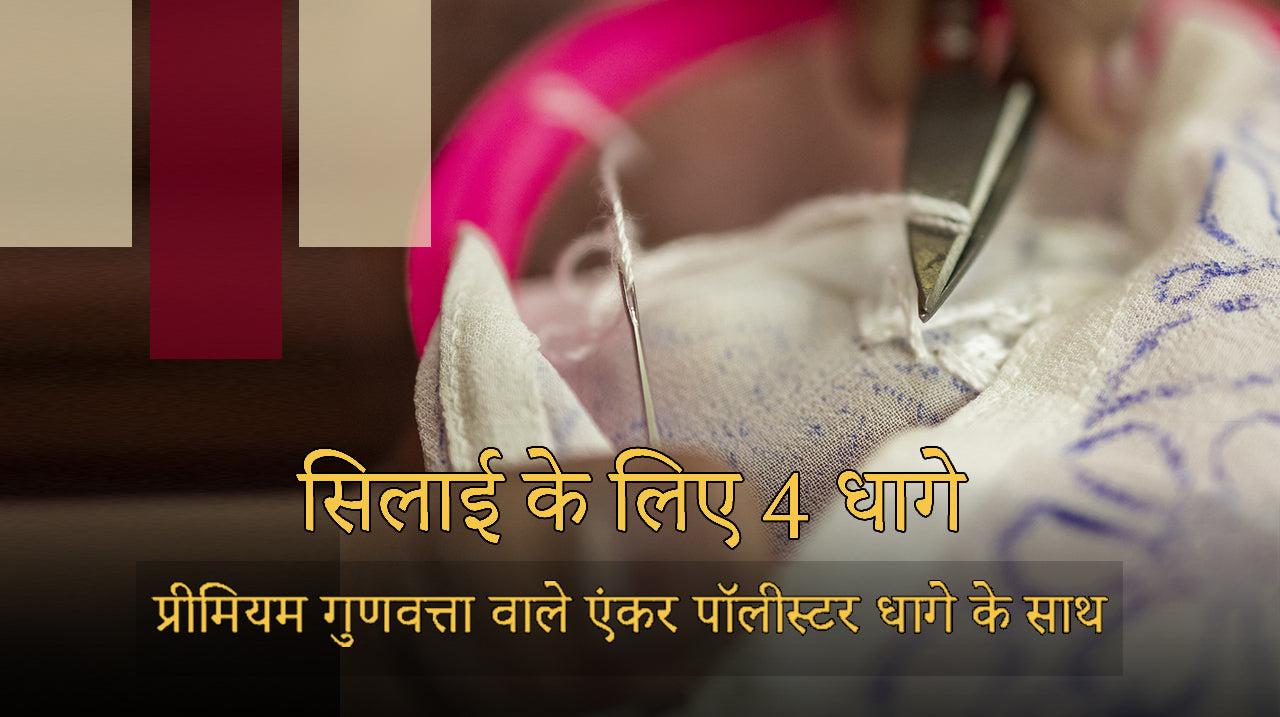

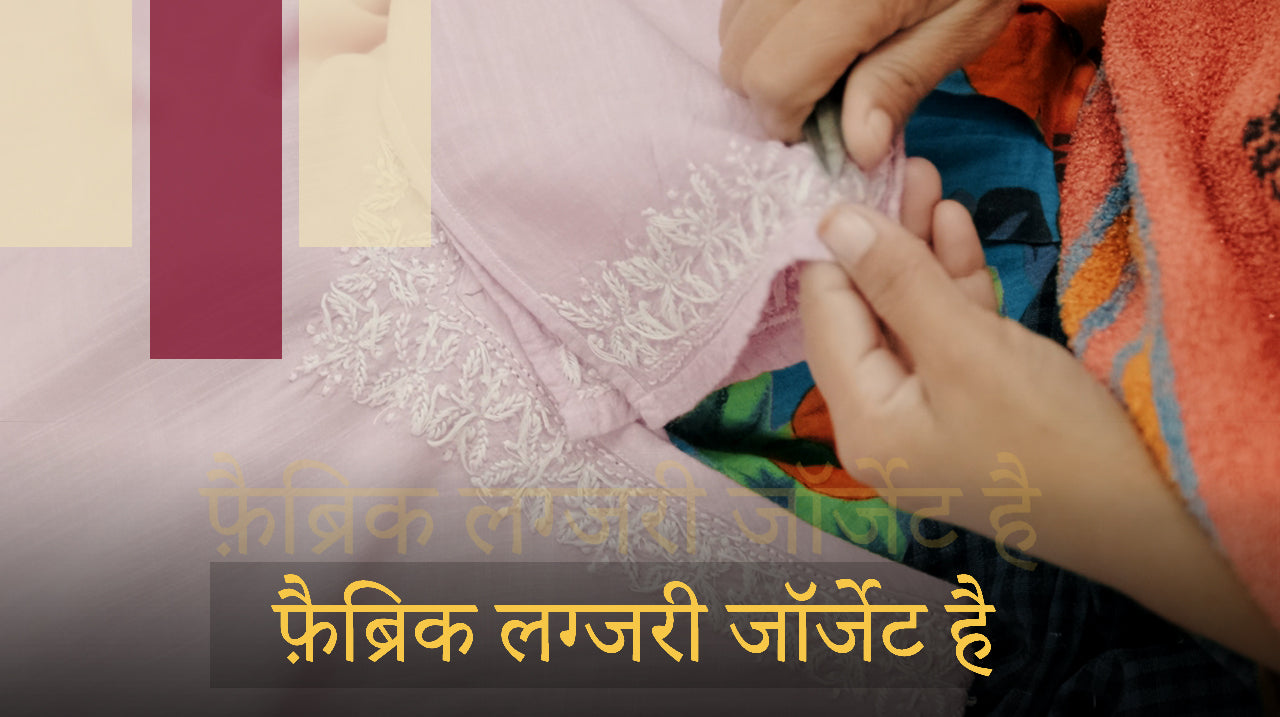
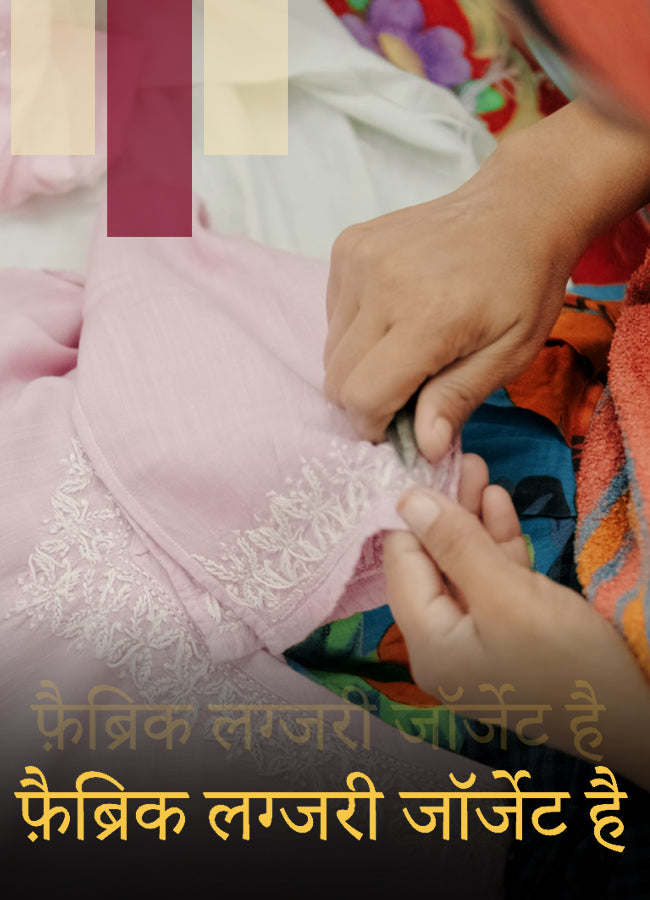
Georgette Chikankari Kurta
Brief history about georgette fabric
Georgette is a lightweight, sheer, and crisp fabric with a slightly crepe-like texture. The delicate and airy fabric is made from twisted yarns, usually silk or polyester. Georgette gets its name from the early 20th-century French dressmaker Georgette de la Plante, who became well known for using the fabric in her elegant and flowing fashions.
The precise origins of georgette fabric are unknown, but it rose to popularity in the 1900s as new textile production methods allowed more intricate fabrics to be woven. Georgette's gauzy transparency and light weight made it well suited to the softer, draping styles of early 20th-century fashions. The new in-vogue silhouette at the time was slim and straight rather than full-skirted, allowing Georgia's supple drape to shine.
Georgette became a quintessential fabric of the Jazz Age flapper style in the 1920s. Its fluidity and sheerness embodied the era's free-spirited and less restrictive styles. Designers crafted georgette into drop-waisted dresses and layered skirts. True to its French origins, georgette was a fixture of Parisian haute couture in the 20s and 30s as an elegant fabric for eveningwear.
The romantic styles of the 1940s also embraced breezy georgette for blouses and dresses. Georgette has drifted in and out of mainstream fashion over the decades but remains a popular fabric for formalwear and summer fashions for its lightweight feel. The fabric lends itself beautifully to gathering, pleating and fluttering with movement. Modern designs in georgette range from flowy maxi dresses to cropped off-the-shoulder tops and airy blouses. Its delicacy and versatility cement georgette's place in fashion history.
Cities which are the major producer of Georgette fabric in India
When it comes to gorgeous georgette fabric worked with intricate Indian chikankari embroidery, Lucknow and Varanasi are the top producers.
Lucknow, the capital of Uttar Pradesh, has a long history of beautiful chikankari - a white-on-white thread embroidery done by skilled artisans. This delicate embroidery is most commonly seen on airy georgette chikankari suit, and frocks. Flowy georgette perfectly showcases the intricate floral and geometric chikankari patterns.
In Lucknow, you can find a variety of chikankari georgette styles, such as long flared kurtas, cropped tops paired with embroidered georgette dupattas, graceful anarkali suits, and feminine georgette frocks with georgette chikankari short kurti. These make for awesome Indian ethnic wear.
Varanasi, an ancient holy city along the Ganges River, also has a strong cottage industry around meenakari—vibrantly coloured silk thread embroidery. Varanasi is famous for its intricate zardozi work on transparent georgette sarees and lehengas. A georgette saree from Varanasi, with intense meenakari covering the whole fabric, is truly a work of art.
Besides Lucknow and Varanasi, which produce high-quality artisanal work, many other cities in India, like Delhi, Mumbai, Surat, Jaipur and Chandigarh, also manufacture georgette fabric. However, the chikankari and meenakari embroidery seen on georgette coming from Lucknow and Varanasi is unparalleled.
So when you want some gorgeous georgette ethnic wear that is delicately handworked with Indian embroidery for that wow factor, do check out designers from Lucknow and Varanasi! Their chikankari and meenakari on georgette is simply breathtaking.
Year on year production of georgette fabric in India
Here is a table which represents city wise georgette fabric production
|
Year |
Delhi |
Mumbai |
Surat |
Bangalore |
Jaipur |
Kolkata |
|
2019 |
10,000 |
20,000 |
85,000 |
8,000 |
10,000 |
5,000 |
|
2020 |
12,000 |
22,000 |
90,000 |
9,000 |
11,000 |
6,000 |
|
2021 |
13,000 |
23,000 |
95,000 |
10,000 |
12,000 |
6,500 |
|
2022 |
14,000 |
25,000 |
1,00,000 |
11,000 |
13,000 |
7,000 |
|
2023 |
15,000 |
27,000 |
1,05,000 |
11,500 |
14,000 |
7,500 |
Here is a table that represents overall georgette fabric production
|
Year |
Georgette production (in metric tones) |
|
2019 |
1,45,000 |
|
2020 |
1,50,000 |
|
2021 |
1,55,000 |
|
2022 |
1,60,000 |
|
2023 |
1,65,000 |
Georgette Chikankari Kurta : An overview
Georgette chikankari kurtas beautifully combine two treasured crafts of India - the delicate transparency of georgette fabric and the intricate details of chikankari embroidery. These kurtas originating from Lucknow are an ethnic wear favourite!
Georgette fabric is made by tightly twisting fine threads together to create a sheer, lightweight and gently textured cloth that flows gracefully. Chikankari on the other hand is a white embroidery technique that uses untwisted white threads to create stunning floral, foliate and geometric patterns on fabric.
When chikankari is embroidered on diaphanous georgette kurtas, the designs seem to float delicately on the semi-sheer fabric. While georgette lends its fluid drape, chikankari adds its luxe allure - together, they can elevate a simple kurta into a work of art!
The most traditional georgette chikankari kurtas are white, with dense white-on-white zardozi patterns covering the fabric. Tiny leaves, buds, and intricate matha-patti motifs decorate necklines and hemlines. Stylish modern variations experiment with pastel shades like yellow, pink, or beige for the base georgette fabric.
While some designs focus more on allover embroidery, others balance it with negative spacing to let the sheerness show through. Kurtas may be long, calf-length numbers or shorter ankle-grazers; you can easily pair them with churidars, palazzos or dhoti pants.
When worn as part of lehengas or anarkalis, frothy georgette chikankari dupattas and long flared jackets take centerstage with lavish surface ornamentation. Broad borders and pallus allow the embroidery masters free rein to create patterns like bel-butis, jaliwork and intricate paisleys.
Georgette chikankari takes the iconic Lucknavi chikankari kurta from heirloom keepsake to high fashion fantasy. They are no longer humble as they were decades ago, these kurtas today command prices running into lakhs for their skillful handiwork. Avid collectors consider them works of wearable art.
If you love ethnic fashion, do indulge in the ethereal comfort of a handcrafted kurta that marries georgette's feathery softness with chikankari's ornamental beauty.
Detailed process of making a georgette chikankari kurta
Crafting an exquisite handmade georgette chikankari kurta is a lengthy process involving multiple skilled artisans. These are the steps to make a frock georgette chikankari short kurti:
|
Designing the Kurta |
A designer first conceptualises the kurta - its shape, length, embroidery placement. Traditional motifs are sketched indicating areas of dense and sparse ornamentation. The motifs and patterns for neck, sleeves, hemline are planned. |
|
Sourcing the Georgette |
Finely woven, circle-finished georgette fabric of the desired colour is sourced from textile weavers and checked thoroughly for flaws. Pure silken georgette is usually preferred though poly-blends are also used. |
|
Cutting the Fabric |
The designer creates a paper pattern for the kurta pieces. These patterns are traced onto cloth layers, which are stacked and cut to shape. The fabric pieces are numbered for easy identification. An extra fabric allowance is left for the embroidery spread. |
|
Embroidering the Pieces |
Chikankari karigars stretch the cut georgette pieces onto addas (embroidery frames). Using fine untwisted white thread and an ari hook tool, they begin hand-embroidering the marked chikankari patterns using different stitches like taipchi, murri, jali, etc. For all-over dense designs, it may take many weeks to complete. |
|
Checking for Flaws |
Once embroidery is finished, the pieces are removed from the frames and scrutinised for errors. If flaws remain, more stitchwork is done to mend gaps. Additional quality checks follow. |
|
Stitching the Kurta |
The shaped fabric pieces are taken for stitching and assembling on stitching machines. Sections are neatened like armholes, necklines and side slits. Embellishments may be attached at this stage too. |
|
Adding Embellishments |
As per the design, ornamental gota, zardozi trims, pearl or sequin work may be affixed along hemlines or necklines. Care is taken not to spoil the original chikankari embroidery. |
|
Final Finishing |
The assemblage undergoes steaming, cleaning and pressing to remove wrinkles, stains or threads. Loose threads are trimmed. The lengths of kurta and dupatta are adjusted. Last quality checks are conducted. |
|
Final Touches |
For additional dazzle, some kurtas may get handmade tassels, pompoms and decorative doris attached along the hemline or neckline. Carefully wrapped and packaged - the georgette chikankari kurta is finally ready to reach its new home! |
5 Reasons why georgette is best suited for chikankari kurta
1. Sheer Lightweight Texture
The finely twisted yarns used to weave georgette give it an extremely lightweight and sheer texture, almost like it held up against the light. Unlike thicker fabrics like cotton or silk, georgette has a translucent, see-through quality with a slightly grainy, crepe-like feel. This delicate transparency allows intricate embroidery on the georgette to be seen clearly - the needlework isn't hidden away within the weave. So when skilled artisans work dense and detailed chikankari patterns onto georgette fabric, you can vividly make out every fine floral motif, leaf vein and geometric element against the semi-sheer background.
2. Smooth Surface
Georgette offers embroidery artisans a smooth, even and consistent fabric surface upon which to stitch. Unlike coarser natural fabrics with slubs or loops, georgette has a neat finely woven structure of twisted yarns. This means the fabric on georgette lakhnavi kurti has an ultra-smooth finish with no loose threads or knots visible when held against the light. Needlework was done on the georgette; therefore, it lies flat without indentations or bumps. The chikankari patterns emerge looking precise, well-defined, and almost three-dimensional based on the georgette's wrinkle-free, crease-free texture.
3. Easy Drapability
One of Georgia's best qualities is its graceful, fluid drape, which lends an effortless elegance to garments made from it. Be it long georgette lakhnavi kurti, flowing maxi dresses or ankle-length anarkalis, georgette beautifully falls over and contours the body shape in a feminine style. As you walk in georgette Chikankari kurti, they sway lightly, and the ultra-lightweight fabric moves fluidly with your body. This fluid drape motion creates a mesmerising ripple effect on the intricate embroidery, making the chikankari patterns appear alive, gliding across the fabric.
4. Vibrant Colour Palette
Georgette takes colour dyes really well and is available in a huge range of hues, from bright jewel tones to subtle pastels. It serves as the perfect neutral backdrop canvas for letting elaborate multi-coloured chikankari embroidery pop vividly. Contrasting colour combinations can make the needlework stand out distinctly.
5. Easy Maintenance
For all its delicate charm, georgette fabric is surprisingly easy to care for. It can be hand-washed gently in cold water using a mild soap. Georgette drapes well even without heavy starching or specialist care. Ironing on reverse at a medium heat settles any creases. These hassle-free properties make georgette a smart choice for chikankari garments.
Trending colours for georgette chikankari kurta in summers
1. White Georgette Chikankari Kurti
White is the most traditional and timeless colour choice for georgette chikankari kurti. Against pristine white georgette, the dense white-on-white zardozi embroidery stands out beautifully. The intricate patterns float gracefully on the equally pale fabric. A classic white georgette chikankari kurti in flowy georgette is perfect for creating an ethnic silhouette. It also suits our culture, as white is seen as pure, auspicious colour. Stay refreshed by pairing white chikankari georgette kurti with palazzos.
2. Black Georgette Chikankari Kurtis
Black georgette makes a strikingly modern contrast for a contemporary spin on intricate white chikankari embroidery. Black georgette kurtis with dense zardozi stitches pop with ornamental details. Georgette Chikankari short kurti embroidered with chikankari motifs on the yoke or sleeves look trendy. The colour black reflects self-confidence—perfect for making a fashion statement. You can complete the look with slim-fit ivory trousers.
3. Blue Georgette Chikankari Kurta
Serene shades like powder blue or aqua blue make delightful colour choices for summer georgette kurtas decorated with chikankari embroidery. The pastel blue soothes the eyes and keeps you feeling cool. On festive occasions, you can pair embroidered blue georgette kurtas with white leggings or silver tights. You can also find deep indigo dresses featuring intricate stitchwork for evening functions.
4. Pink Georgette Chikankari Kurti
Pink-coloured georgette kurtas are handworked with intricate chikankari and scream feminine charm! Blush pink and rose pink georgette fabric highlighted with dense white thread embroidery has an ornate ethnic aesthetic perfect for weddings. The soft, dreamy colour looks graceful on all complexions. Contrast it with bold silver jewellery and heels for the festive season.
5. Yellow Georgette Chikankari Kurti
Yellow georgette chikankari kurti decorated with energetic multi-coloured chikankari embroidery and mirrorwork make cheerful summer wear. The vibrant colour is associated with joy, wisdom, and auspiciousness in India. Wear these lightweight short or calf-length kurtis with tasselled ornaments to embrace the season's flirty vibe.
Interseting ways in which you can style your georgette chikankari kurta
When you've invested in an intricately handcrafted chikankari embroidered kurta made from fine georgette fabric, you want to do justice to its exquisite charm. With some clever styling tweaks, your precious Georgette chikankari kurti can go from day-lounging to wedding-worthy to night-out glamorous!
Here are some interesting style tips and tricks to try out with your georgette chikankari kurtas:
1. Indo-Western Twist
Pair your georgette chikankari kurta with distressed denim jeans to give it a casual spin. This East-meets-West fusion look perfectly blends tradition and global trends for brunch dates or college wear. Fold up the kurta sleeves slightly.
2. Mix and Match
Make the delicate georgette chikankari kurta the focal point by teaming it with solid-coloured palazzos, harem pants, or leggings in contrasting shades. Play with metallic pants, white shararas, or printed pants/skirts.
3. Cinch with a Belt
Cinch your georgette chikankari kurta or short kurti at the waist with a brightly patterned fabric belt or embroidered waistband. This will accentuate your figure and give definition to the flowy silhouette.
4. Layer it Up
When dressing it down, layer your georgette chikankari tunic or kurti over casual round-neck tees and tanks in neutral shades. Choose flowy digitally printed or Ikat woven dupattas for extra flair.
5. Jacket Style
For a contemporary vibe, wear the georgette chikankari anarkali kurta like an open-front jacket over palazzos and a plain tank top. Arm yourself with stacked bangles and hoops.
6. Corset Style
Take inspo from fusion runways by corseting a black georgette lucknowi kurti over skinny stirrup pants for night outs. Highlight with smoky eyes, nude lips, and wavy tresses.
7. Traditional Touch
Keep it classic Indian by teaming georgette Lakhnavi kurta with gharara pants, churidars or leggings with ethnic mojris or juttis. Complete the look with a potli bag, long oxidised earrings, and bindi.
So unleash your inner stylist to transform the delicate georgette chikankari into a high-fashion statement!


